
Data in Civil Engineering: Three Essential Steps for Success
Civil engineering involves collecting loads of data, whether surveying the land, measuring specific areas, or gathering other significant numbers for your projects. Reviewing your recent projects, you’ll notice that your company has accumulated a lot of data for each job. However, not many businesses are making the most of this information, meaning they’re missing out on some valuable insights!
In civil engineering, you gather a lot of data. This could be from measuring land, tracking where things are, or collecting numbers for specific projects. Looking back at your recent projects, you’ll probably have amassed tons of information. But many companies don’t use this data well, so they miss valuable insights.
Remember, the more you know, the better you can do. By looking closely at your data, you can learn things that will help make your next project even better. You can plan better and offer excellent service. Data in civil engineering is beneficial when it gets to the right person at the right time and is easy to understand. Then, it can help you make smart decisions.
Let’s look at three easy steps to make your data useful.
Organise Your Data
To make the most of your data in civil engineering, it’s crucial to gather it in an organised way. Choosing a single, all-in-one software platform is a game-changer here. It lets you put all your project information in one spot, making everything from client details to budget figures easy to find and manage. This method not only keeps your data clear and organised but also ensures everyone in your team is working with the same information. It means you can avoid entering the same data in multiple places, reducing errors and saving time. This saved time can be better used for data analysis or planning your next moves.
Having all your data in one system also makes it simpler to keep track of how your projects are doing. You can quickly see what’s working well and what needs more attention. This complete view of your project data helps with effective management and smarter decision-making, as you’re always working with the most current information. The key to using your data well in civil engineering is having a unified system that makes collecting, checking, and using your data easier, laying the groundwork for making the best use of your information.
Use Smart Sensors on Your Equipment
The Internet of Things, or IoT for short, is a useful way to work with data in civil engineering. It’s all about having devices and machines that can talk to each other online. Imagine a sensor that can look underground or a drone that can quickly map out a large area – much faster than a person could. The information these gadgets collect is sent straight to your computer system. This makes things faster because you don’t have to deal with so much paperwork, and you get a lot of helpful information to make plans and predictions for your next projects.
If your business includes maintenance work, IoT is super helpful. Sensors can monitor how things are running and tell you when something needs fixing or might soon break down. This means you can resolve problems before they get big, keeping your customers happy because everything works smoothly. Using IoT in this way shows your customers that you’re on top of things and care about providing good, reliable service.
Pick the Right Digital Partner
Selecting the right digital partner is a crucial decision that can have a lasting impact on your business. It’s essential to find a partner who not only meets your current needs but also demonstrates the potential to support your growth and evolution in the years to come. The ideal partner should have a deep understanding of the civil engineering sector, demonstrating an ability to address your specific challenges and a commitment to staying ahead of industry trends.
When selecting a digital partner for your civil engineering needs, focus on key aspects like industry expertise, problem-solving capabilities, and future readiness. A good partner should deeply understand the civil engineering sector, offering insights and solutions tailored to your unique challenges. They should have a proven track record of innovative problem-solving and be adept at integrating emerging technologies, such as IoT, into their existing systems. Also important is their commitment to long-term support and development, ensuring that your technology stays current in a rapidly evolving landscape. Additionally, consider the cultural fit; a partner whose values and working style align with yours can significantly enhance communication and collaboration, leading to more successful outcomes.
In summary, choosing a digital partner for your civil engineering business is about balancing current expertise and future potential. Engaging in detailed discussions is vital to understanding how they can help you integrate advanced technologies like IoT, ensuring your business stays efficient, competitive, and ready for future challenges.
Interested in enhancing your civil engineering projects with digital solutions? Discover valuable insights in our whitepaper, ‘5 Common Challenges in Civil Engineering Projects and How to Overcome Them Through Technology.’ This guide highlights five innovative strategies where digital tools can significantly boost your project efficiency.
-
Share:

Paul Broderick | Paul has developed a keen eye for seeing specific customer requirements and recommending solutions to deliver business benefits and returns-on-investment. In the last three years Paul has focused this experience and knowledge specifically on the Construction industry, where digitisation is now the hot topic in IT, which has evolved and matured to become most relevant in today’s construction industry.

